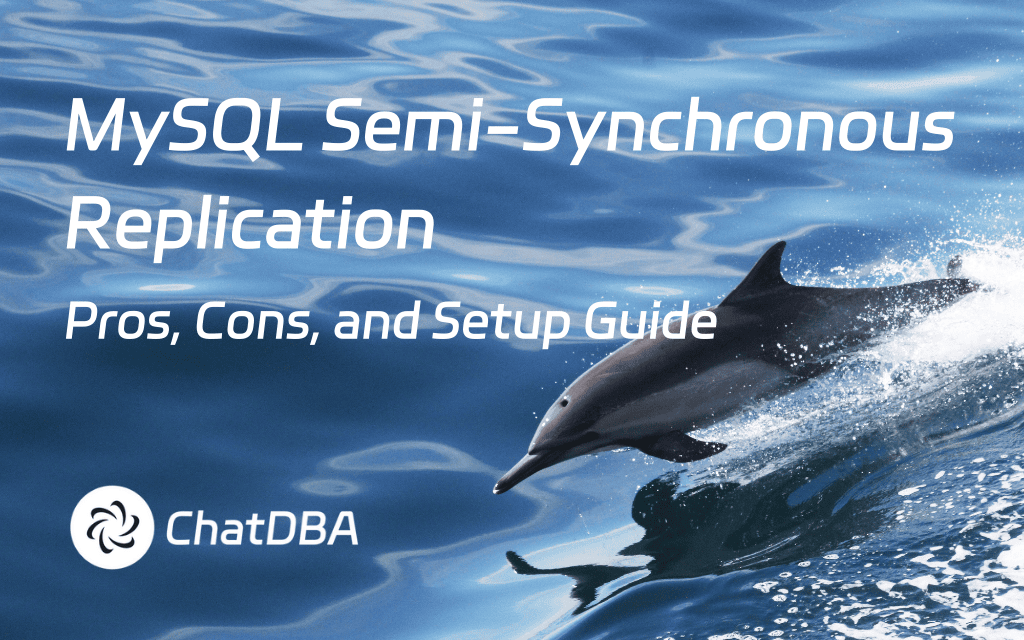MySQL 5.7 introduced semi-synchronous replication to enhance data durability while maintaining performance. This guide explains its core advantages, challenges, and practical setup steps using modern terminology.
Key Advantages
- Improved Data Consistency
- Primary waits for at least one secondary to acknowledge receipt of binary logs before committing transactions.
- AFTER_SYNC mode (default) ensures transactions are durable even if the primary crashes.
- Performance Optimization
- Requires fewer acknowledgments than full synchronous replication, reducing latency.
- Auto-fallback to asynchronous mode prevents primary blocking during secondary outages.
- Flexible Failover
- Supports up to one secondary timeout before degrading, balancing safety and availability.
Major Drawbacks
- Increased Latency: Primary commits stall if secondaries are slow or networks lag.
- Risk of Data Loss: If all secondaries disconnect, primary reverts to asynchronous mode.
- Complex Configuration: Requires plugin installation and parameter tuning (e.g.,
rpl_semi_sync_primary_timeout).
Step-by-Step Configuration (Primary-Secondary Architecture)
1. Prerequisites
- Ensure primary-secondary replication is functional.
- Enable binary logging (
log-bin) on the primary. - MySQL version ≥ 5.7 with dynamic plugin support.
2. Install Plugins
Primary:
INSTALL PLUGIN rpl_semi_sync_primary SONAME 'semisync_primary.so';
SET GLOBAL rpl_semi_sync_primary_enabled = 1;
Secondary:
INSTALL PLUGIN rpl_semi_sync_secondary SONAME 'semisync_secondary.so';
SET GLOBAL rpl_semi_sync_secondary_enabled = 1;
3. Key Parameters (my.cnf)
Primary:
[mysqld]
rpl_semi_sync_primary_enabled = 1
rpl_semi_sync_primary_timeout = 5000 # Timeout in milliseconds (default: 10000)
rpl_semi_sync_primary_wait_for_secondary_count = 1 # Wait for 1 secondary
rpl_semi_sync_primary_wait_point = AFTER_SYNC # Commit after sync
Secondary:
[mysqld]
rpl_semi_sync_secondary_enabled = 1
4. Validate Status
Primary:
SHOW STATUS LIKE 'Rpl_semi_sync_primary_status'; -- Should show 'ON'
SHOW STATUS LIKE 'Rpl_semi_sync_primary_clients'; -- Connected secondaries
Secondary:
SHOW STATUS LIKE 'Rpl_semi_sync_secondary_status'; -- Should show 'ON'
Best Practices
- Monitor Performance: Track
Rpl_semi_sync_primary_no_timesfor timeouts. - Adjust Timeouts: Increase
rpl_semi_sync_primary_timeoutin high-latency networks. - Multi-Secondary Safety: Set
wait_for_secondary_count ≥ 2for critical workloads.
Conclusion
Semi-synchronous replication offers a practical compromise between durability and speed. Use it to enhance fault tolerance without sacrificing performance—especially in environments where occasional latency is preferable to data loss.

%20(2048%20x%201000%20%E5%83%8F%E7%B4%A0)%20(3).png)

%20(2048%20x%201000%20%E5%83%8F%E7%B4%A0)%20(2).png)
